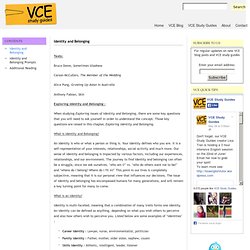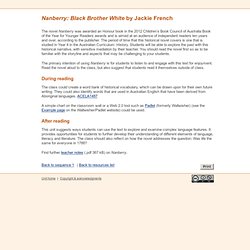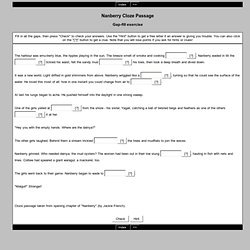

Identity and Belonging - VCE Study Guides. Texts: Bruce Dawe, Sometimes Gladness Carson McCullers, The Member of the Wedding Alice Pung, Growing Up Asian in Australia Anthony Fabian, Skin Exploring Identity and Belonging : When studying Exploring Issues of Identity and Belonging, there are some key questions that you will need to ask yourself in order to understand the concept.

What is Identity and Belonging? An identity is who or what a person or thing is. What is an identity? Identity is multi-faceted, meaning that a combination of many traits forms one identity. Career identity : Lawyer, nurse, environmentalist, politicianFamily identity : Father, mother, older sister, nephew, cousinSkills identity : Athletic, intelligent, leader, listenerCultural identity : History, tradition, religion, gender, ethicsSocial identity : Peer group, clique, gang, club, mob, social class Note that people do not just possess one concrete identity.
What is belonging? Belonging means to feel a sense of welcome and acceptance to someone or something. Teachers_Notes_Nanberry.pdf - Bookvibes.com. S1 Nanberry: Black Brother White by Jackie French. The novel Nanberry was awarded an Honour book in the 2012 Children’s Book Council of Australia Book of the Year for Younger Readers awards and is aimed at an audience of independent readers ten years and over, according to the publisher.

The period of time that this historical novel covers is one that is studied in Year 4 in the Australian Curriculum: History. Students will be able to explore the past with this historical narrative, with sensitive mediation by their teacher. You should read the novel first so as to be familiar with the storyline and aspects that may be challenging to your students. The primary intention of using Nanberry is for students to listen to and engage with this text for enjoyment. Read the novel aloud to the class, but also suggest that students read it themselves outside of class. During reading The class could create a word bank of historical vocabulary, which can be drawn upon for their own future writing. After reading Back to sequence 15 | Aboriginal People of Coastal Sydney.
ABC Online Indigenous - Interactive Map. My Place for teachers. From April to May 1789 an outbreak of smallpox devastated Aboriginal clans around the New South Wales colony.

It has been estimated that somewhere between 50 and 70 per cent of the Aboriginal population in the Sydney area died within two years of the British arrival. The Cadigal people, who are the recognised owners of Sydney Cove, suffered great losses from the disease. Arabanoo (1759–1789), a Cadigal man who had been captured by Governor Phillip (1738–1814) and imprisoned and subsequently released, died from smallpox after caring for others who had contracted the disease.
He was buried in the governor's garden. Arabanoo reported that families had fled both to the north and to the interior of the country. Aboriginal people had never experienced smallpox and had no immunity against the disease. The great number of deaths within the Indigenous population had devastating effects on the social organisation of their clans. Nanberry Cloze Passage. The harbour was emu-berry blue, the ripples playing in the sun.

The breeze smelt of smoke and cooking . Nanberry waded in till the tickled his waist, felt the sandy mud his toes, then took a deep breath and dived down. It was a new world. Light drifted in gold shimmers from above. Nanberry wriggled like a , turning so that he could see the surface of the water. At last his lungs began to ache. One of the girls yelled at from the shore - his sister, Yagali, catching a ball of twisted twigs and feathers as one of the others it at her. "Hey you with the empty hands. The other girls laughed. Nanberry grinned. The girls went back to their game. "Maigul! " Cloze passage taken from opening chapter of "Nanberry" (by Jackie French).
National Identity-Australia www.abc.net.au.